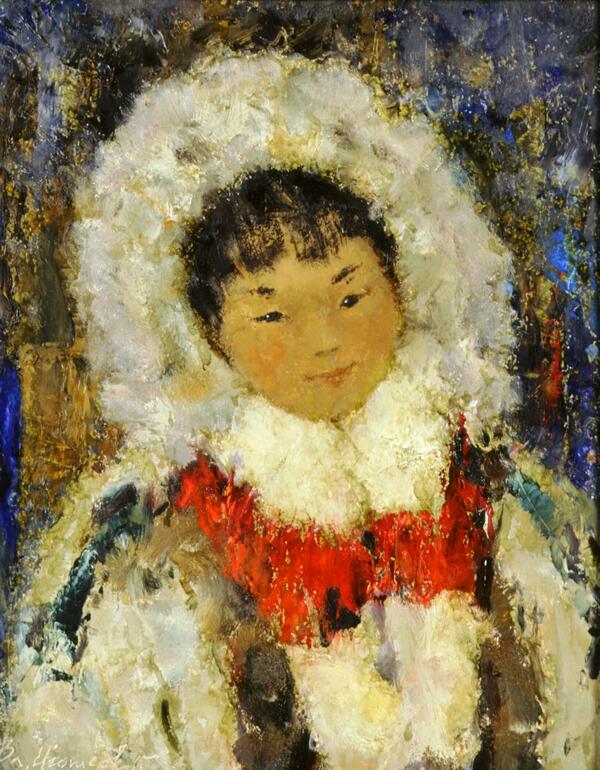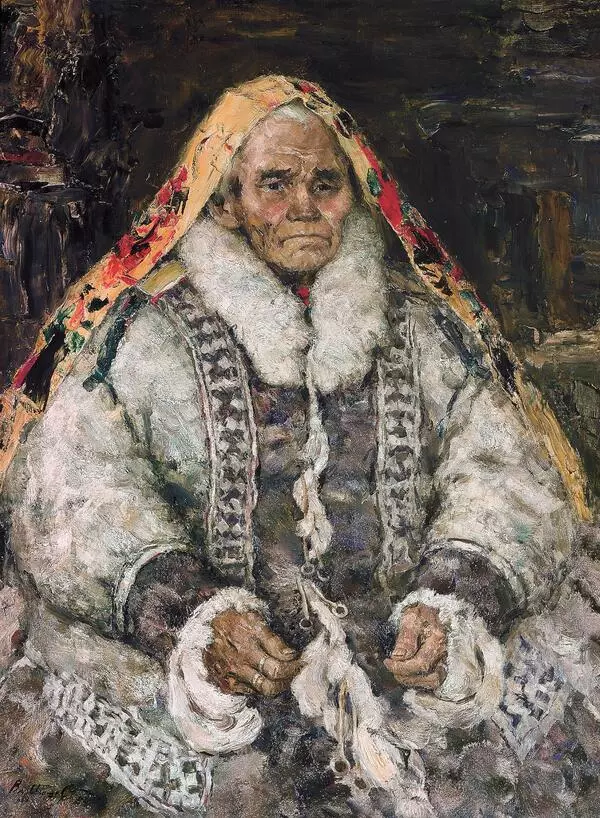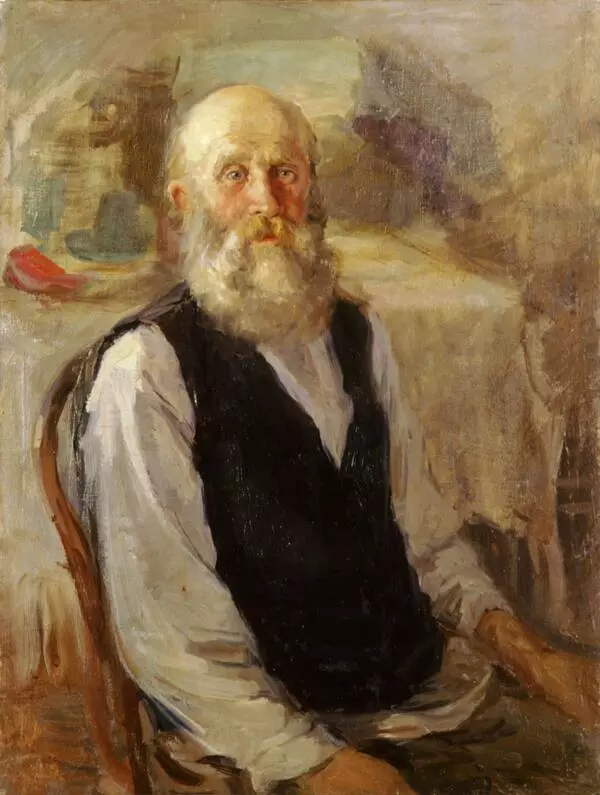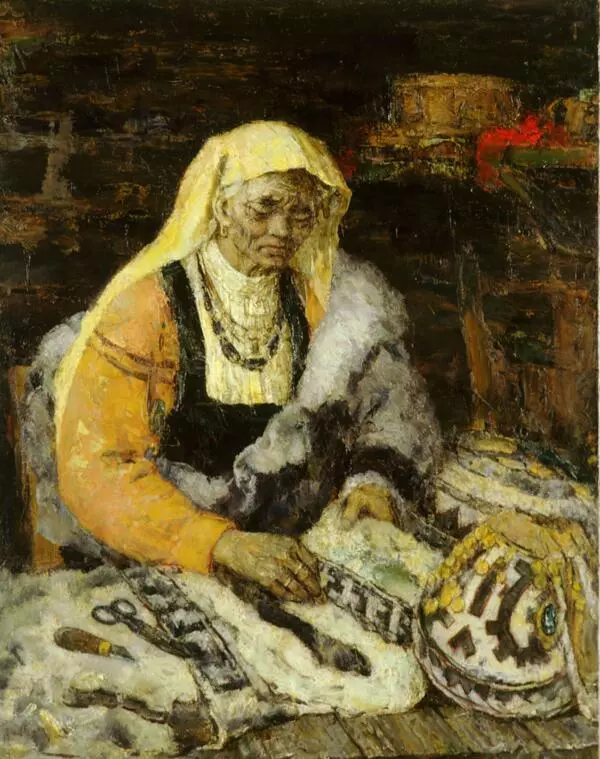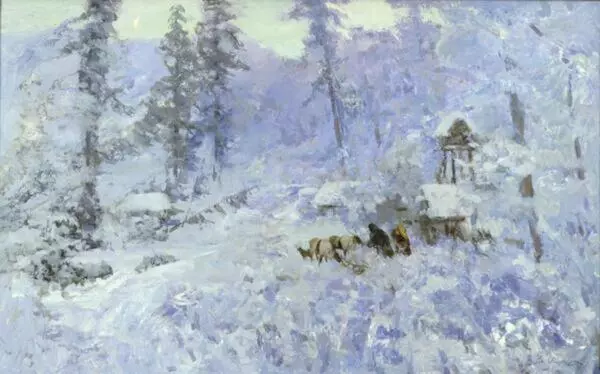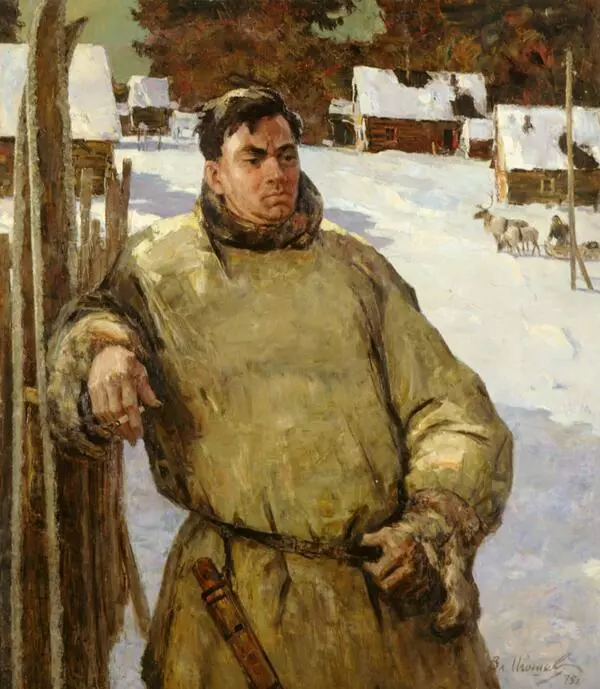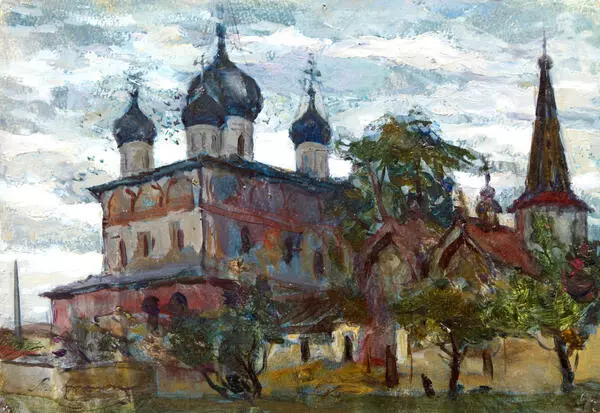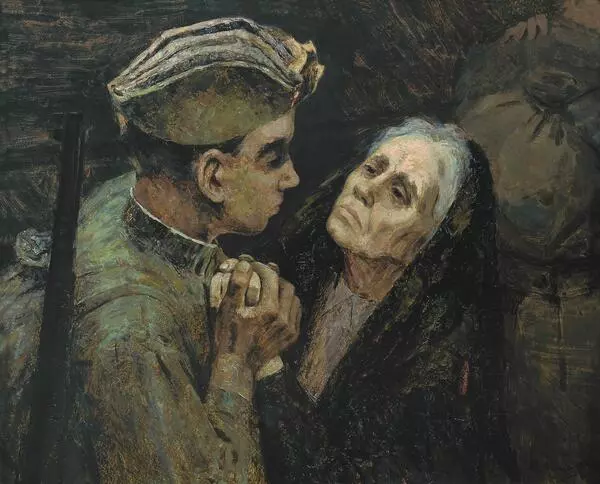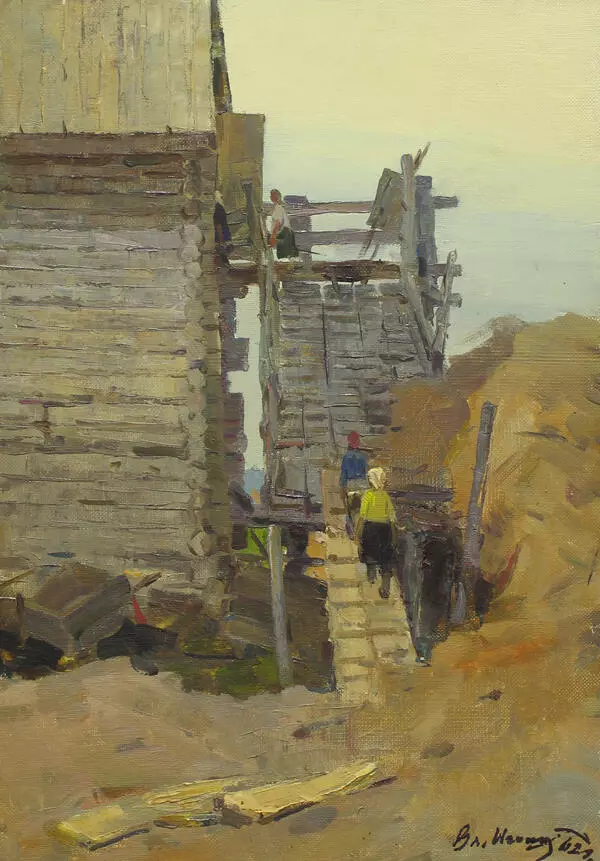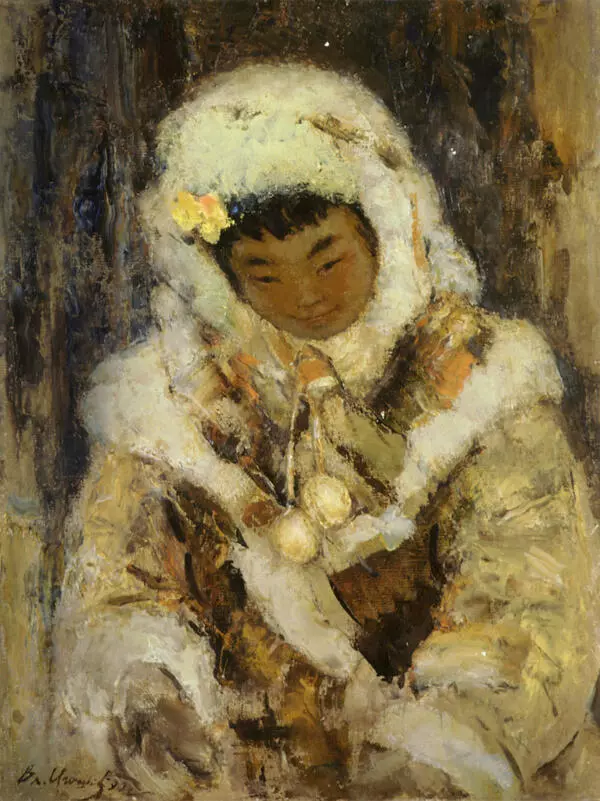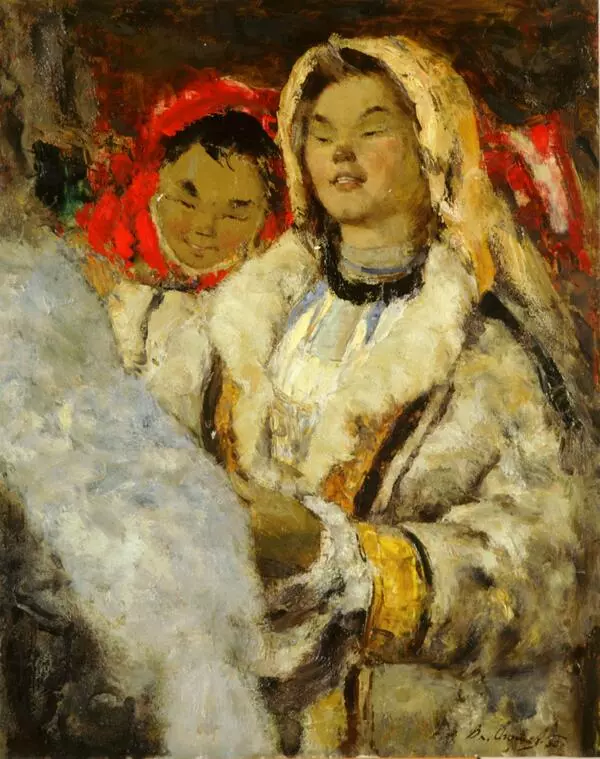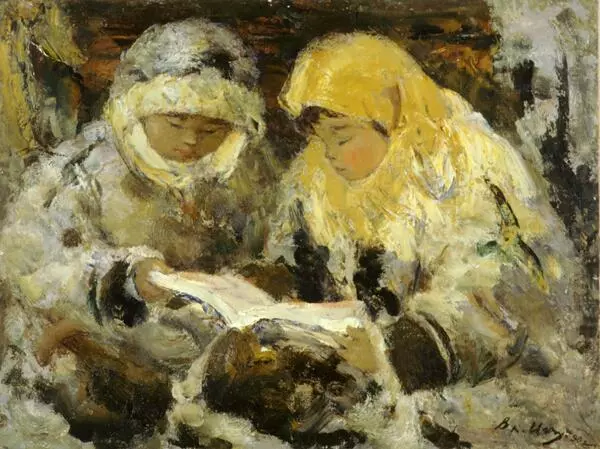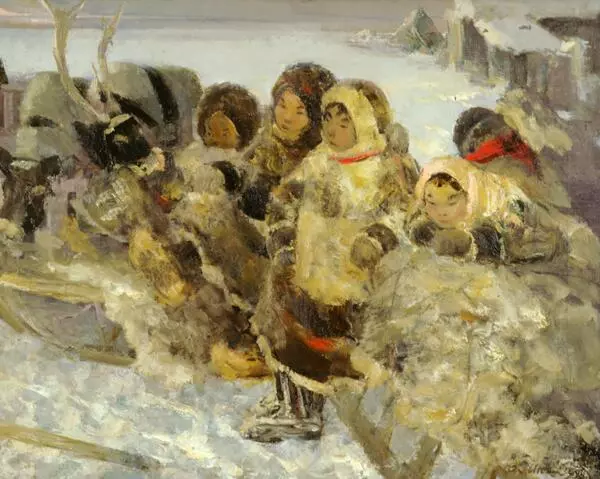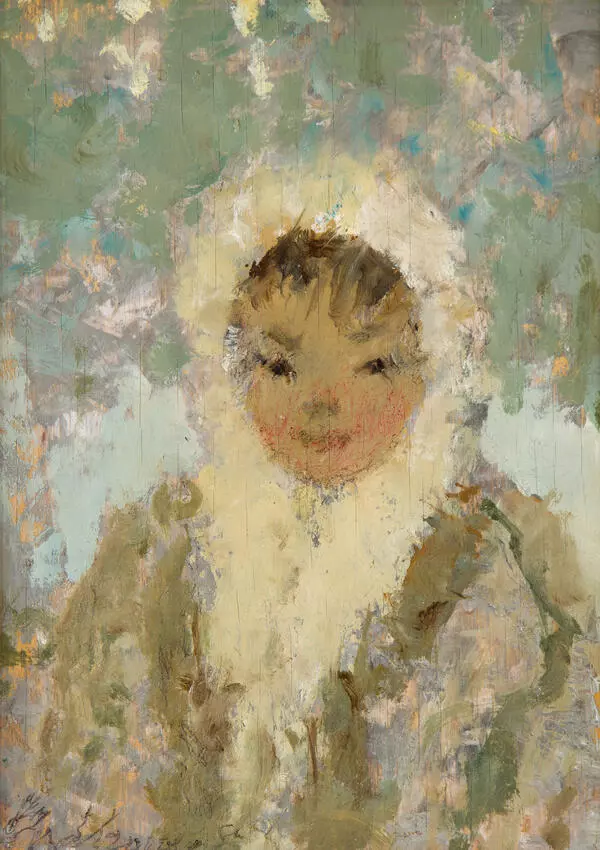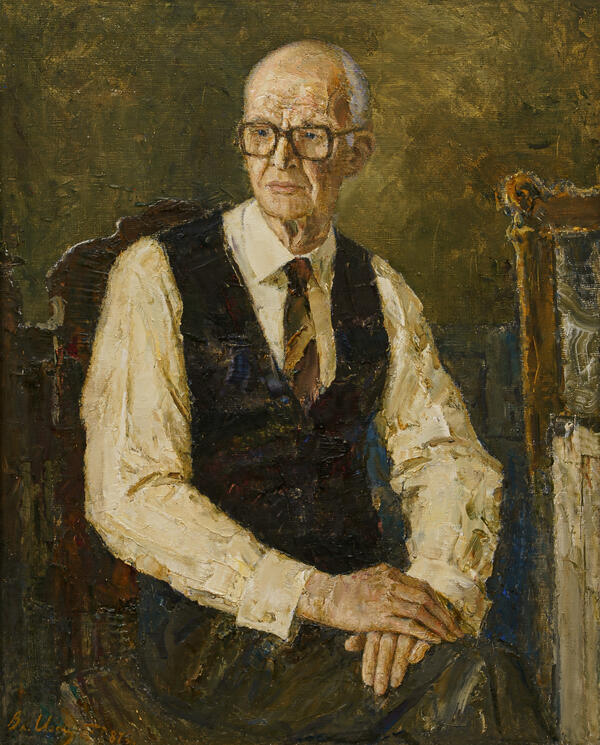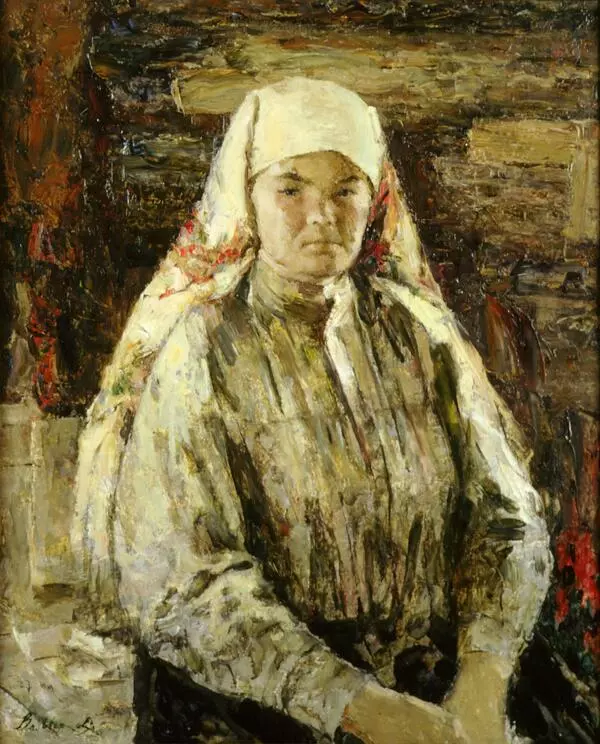Girl with a Red Scarf was painted by Vladimir Igoshev in 1989.
Vladimir Igoshev is the People’s Artist of the USSR and a winner of the State Prize of Russia named after Ilya Repin. He was born in 1921 in a small village situated close to Askino in the north of Bashkiria. In 1940 he graduated from The Ufa College of Arts.
During the Great Patriotic War from 1941 till 1943 Vladimir Igoshev served in the army. He was seriously wounded at Stalingrad and spent much time in the hospital. Having returned to Ufa, in spite of his health condition, he continued to work on his paintings. In 1950 he graduated from The Surikov Art Institute in Moscow. In 4 years Igoshev went to the northern regions of the country for the first time and visited Khanty-Mansi Okrug. Here he explored local traditions, worked on the landscapes and genre paintings, painted the portraits of reindeer-breeders, fishermen and members of their families.
The painting Girl with a Red Scarf is made in unusual manner. The rapid and tiny brushstrokes intertwine and create the surreal colourful patterns. The viewer sees the northern girl’s portrait through them. Bright palette and multiple splotches of light symbolize the colourful, joyful and careless child’s world. The mood created by the painting is caught in its main element, a bright red-orange scarf tied over the clothes made of deerskin.
The peoples of the North have their own concept of female beauty. When choosing a wife, men consider their physical endurance and good health instead of their look and age. The qualities of a mother and a housekeeper are also considered, such as the ability to cook and to take care of the domestic animals, handicraft skills. It was required to pay a bride price, but if the girl’s parents didn’t give their permission, it was common to “steal” a bride. Having entered the husband’s house, a ‘stolen’ girl was supposed to ‘cover up’, to hide her face from her husband and his male relatives. And only a month, six months or a year after the newlyweds visited the bride’s parents for their forgiveness. This is when the wedding feast was to be arranged. The stories about bride kidnapping are very widespread in the local folklore.
Vladimir Igoshev is the People’s Artist of the USSR and a winner of the State Prize of Russia named after Ilya Repin. He was born in 1921 in a small village situated close to Askino in the north of Bashkiria. In 1940 he graduated from The Ufa College of Arts.
During the Great Patriotic War from 1941 till 1943 Vladimir Igoshev served in the army. He was seriously wounded at Stalingrad and spent much time in the hospital. Having returned to Ufa, in spite of his health condition, he continued to work on his paintings. In 1950 he graduated from The Surikov Art Institute in Moscow. In 4 years Igoshev went to the northern regions of the country for the first time and visited Khanty-Mansi Okrug. Here he explored local traditions, worked on the landscapes and genre paintings, painted the portraits of reindeer-breeders, fishermen and members of their families.
The painting Girl with a Red Scarf is made in unusual manner. The rapid and tiny brushstrokes intertwine and create the surreal colourful patterns. The viewer sees the northern girl’s portrait through them. Bright palette and multiple splotches of light symbolize the colourful, joyful and careless child’s world. The mood created by the painting is caught in its main element, a bright red-orange scarf tied over the clothes made of deerskin.
The peoples of the North have their own concept of female beauty. When choosing a wife, men consider their physical endurance and good health instead of their look and age. The qualities of a mother and a housekeeper are also considered, such as the ability to cook and to take care of the domestic animals, handicraft skills. It was required to pay a bride price, but if the girl’s parents didn’t give their permission, it was common to “steal” a bride. Having entered the husband’s house, a ‘stolen’ girl was supposed to ‘cover up’, to hide her face from her husband and his male relatives. And only a month, six months or a year after the newlyweds visited the bride’s parents for their forgiveness. This is when the wedding feast was to be arranged. The stories about bride kidnapping are very widespread in the local folklore.

